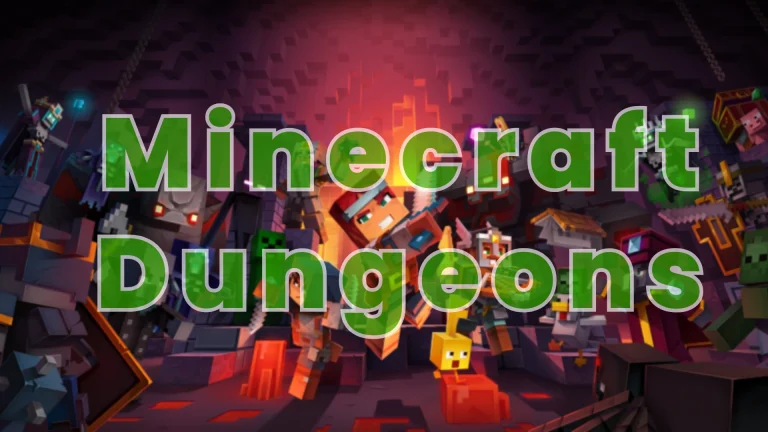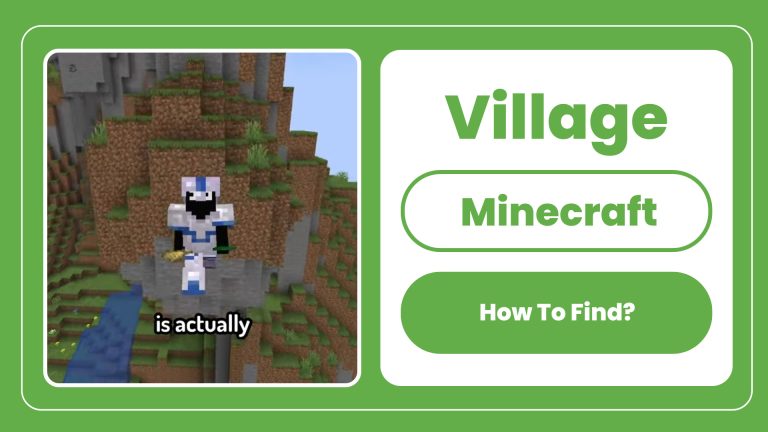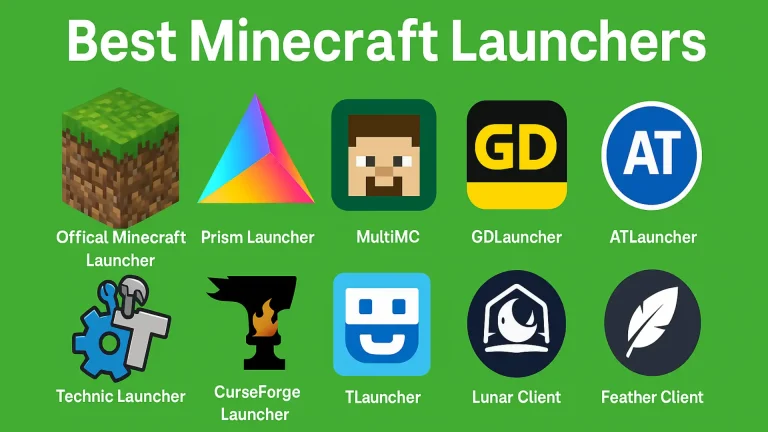What is Minecraft Classic? History and Features with Complete Guide
When you load up the blocky landscapes of modern Minecraft, it’s easy to forget just how humble its beginnings were. Minecraft Classic is the official name for the first public version of Mojang’s sandbox phenomenon. Released in May 2009 as a browser-based prototype, it had only a creative mode and allowed up to nine players to join a shared world via a simple link.
There were no survival mechanics, crafting recipes, mobs, or biomes just a flat world made of blocks waiting to be placed or destroyed. Later versions eventually introduced a rudimentary survival test, but the initial Classic experience was purely about building.
The version most people know today was released in 2019, when Mojang re-released Classic as a free browser game to celebrate the series’ tenth anniversary. The company’s own announcement invited players to “embrace the past” and play the 2009 version, complete with its original bugs, 32‑block palette, and retro interface. For veteran players, it was a nostalgic trip back to the days before biomes and Redstone; for newcomers, it offered a glimpse into how a global phenomenon began.
What is of Minecraft Classic? A Brief History
From Pre Classic to Classic
Minecraft’s development is typically divided into stages: Pre-Classic, Classic, Indev, Infdev, Alpha, and so on. Classic was the second major phase of growth, following the pre‑Classic prototypes and preceding the more structured Indev builds. It was during the Classic phase that Mojang (then a one-person team of Markus “Notch” Persson) decided to publish test builds to the public.
At first, there was only a Creative mode, players spawned with an inventory containing all block types and could build and destroy instantly. Later, Mojang introduced a Survival Test, which added a point-based scoring system, a health bar, and the first hostile mobs, such as zombies and skeletons. Survival Test versions even allowed players to gather materials, pick up blocks, and respawn at set points, hinting at the full survival mode that would arrive in later versions. However, once Creative mode was reintroduced in Beta 1.8, Classic’s functionality became redundant, and it was subsequently removed from the launcher.
Celebrating a Ten Year Milestone
The 2019 re‑release of Classic was more than a history lesson, it was part of Mojang’s tenth anniversary celebrations. The company noted that in just ten years, the small crafting game had become a global icon, and releasing Classic was a tongue-in-cheek way of saying thank you to the community. The browser version is hosted at classic.minecraft.net, requires no account, and loads instantly. It faithfully reproduces the 2009 build, including quirks like the clunky user interface and inability to save progress, giving players a genuine look at the game’s humble roots.
What Makes Minecraft Classic Unique?
Classic Minecraft differs radically from the polished Java or Bedrock editions of today. Its charm lies in its simplicity and the limitations that encouraged creativity.
Limited World and Block Palette
The world in Classic is tiny compared with modern procedural generations. Upon spawning, players found themselves on a small island surrounded by water; exploring too far led to invisible boundaries above and below the water. The terrain consisted of grass, dirt, sand, stone, and occasional trees, with small coal or ore deposits embedded in hills. There were no mobs, leaving players completely alone.
The inventory offered just 32 block types split into two groups:
Core blocks: stone, dirt, wood, logs, saplings, flowers, mushrooms, sand, glass, sponges, and gold.
Colorful wool: 16 shades of wool, including some hues that are no longer available today, accessible without crafting or dyeing
Players could not craft new items or open the inventory with E; instead, they pressed B for “build”. There was no day night cycle, Redstone, weather, or hunger bar. Water did not flow, gold and iron ores existed but could not be collected, and mushrooms and sponges were already present, foreshadowing features that would be expanded later.
Simple Building Mechanics
Building in Classic feels rudimentary but intuitive. Players had no tools; they removed blocks simply by left‑clicking and placed blocks with the same button. Switching between destroying and placing required the right mouse button. The selected block appeared as a transparent preview, making placement easier. Because the mode was purely creative, there was no resource gathering, and players had infinite health. They could not drown or take fall damage.
Classic also introduced a handful of commands. In multiplayer, players could type /help, /list, /kick, /tp, and /setspawn. These early commands laid the groundwork for the robust command system used in modern versions of the software. Interestingly, players could respawn at their spawn point by pressing the R key, a feature similar to sleeping in a bed today.
The Early Seeds of Success
Although Classic is limited, it contains surprising hints of features to come:
- Mushrooms were present from the beginning, predating their eventual use in potions and mooshroom cows.
- Gold blocks existed even though gold ore could not be collected.
- Sponges could be used to remove water, hinting at fluid mechanics that would later become central to aquatic studies.
- Coal and iron were present in stone walls, but couldn’t be mined or used.
These small inclusions foreshadowed the rich material variety and functional blocks added in later updates. The inclusion of basic multiplayer up to nine players sharing a link hinted at the community‑driven experiences that would soon flourish.
Multiplayer Simplicity
The simplicity of Classic’s multiplayer is part of its charm. When you load a world, a URL appears that you can send to friends. Up to nine players can build together. There is no server configuration or account management players just click the link and join.
How to Play Minecraft Classic Today
Despite its age, Classic is surprisingly easy to access. You don’t need to install anything; all you need is a modern web browser. Here is Step‑by‑Step Setup:
- Open the official site: Navigate to https://classic.minecraft.net.
- Choose a username: Enter a nickname that will display above your avatar.
- Start playing: The world loads instantly in your browser.
- Invite friends (optional): The site generates a shareable link that allows up to eight additional players to join your session.
There’s no login and no payment required. Classic works in modern browsers, including Chrome, Firefox, Edge, and Safari. Because it uses basic WebGL, performance is smooth even on older computers. However, mobile browsers struggle due to unoptimized touch controls and memory constraints; while you can request the desktop site on Android, the gameplay is clunky.
Building in Classic: The Art of Pure Creativity
Because there are no tools or survival concerns, building in Classic is straightforward. You can remove a block simply by left‑clicking and place the selected block by left‑clicking again. To toggle between destroying and placing, you use the right mouse button. The game previews the selected block as a translucent outline before you put it.
Classic grants players an infinite lifespan. You cannot drown, suffocate, or die from fall damage. This allows for risk‑free experimentation jump off cliffs, build underwater, or delete the ground beneath you without fear. Building is a serene process: there are no creepers to explode your structures, no hunger bar to manage, and no time of day to track.
To switch materials, you open the inventory (the B key) and click the block you want. The chosen block appears in your hotbar, replacing the slot you were using. Because there are only 32 blocks, you quickly memorize the palette and develop favorite colors and textures.
How Classic Foreshadowed Minecraft’s Evolution
Despite its simplicity, Classic contained seeds that would blossom in later updates. Mushrooms were present from the beginning, predating their eventual use in potions and mushroom cows. Gold blocks existed even though gold ore could not be collected. Sponges could absorb water, hinting at fluid mechanics that would later become central to aquatic adaptations.
The presence of basic multiplayer up to nine players sharing a link hinted at the community‑driven experiences that would soon flourish. The community feedback during Classic’s development also shaped the game. Players’ experiences and suggestions encouraged Notch to add new features and expand the project.
Why Play Minecraft Classic in 2025?
At first glance, Classic may seem obsolete a relic surpassed by modern editions. Yet revisiting it offers several benefits:
- Historical Perspective: Classic is a digital time capsule that shows how much the game has evolved. Exploring it helps you appreciate the design decisions behind later mechanics.
- Accessibility: Because it runs in a browser and requires no download or login, Classic works on older computers and is ideal for quick sessions or educational settings.
- Nostalgia: Long‑time players can relive their early experiences and share them with new friends or younger family members.
- Pure Creativity: Without survival pressures, players can focus entirely on building and imagining. Something is calming about placing wool blocks without worrying about hunger or mobs.
- Teaching Tool: Educators and parents can use Classic as an ad‑free, low‑risk environment to introduce children to basic game mechanics.
Even though Classic sessions may last only 10-30 minutes, they provide a refreshing break from the complexity of modern Minecraft. Sometimes, less truly is more.
Conclusion
Minecraft Classic is more than just an old version of a game; it’s a window into the early days of a cultural phenomenon. This stripped‑down, browser‑based build highlights the core mechanics building and exploration without the distractions of survival, Redstone, or massive biomes. Its tiny worlds, limited blocks, and basic controls may seem archaic, yet they remind us of what made Minecraft revolutionary: the freedom to create.
By exploring Classic today, we honor the community that shaped Minecraft’s development and experience the joy of building with no strings attached. Whether you’re a newcomer curious about gaming history, Minecraft Classic offers a charming, accessible journey into the roots of one of the most influential games of all time.






